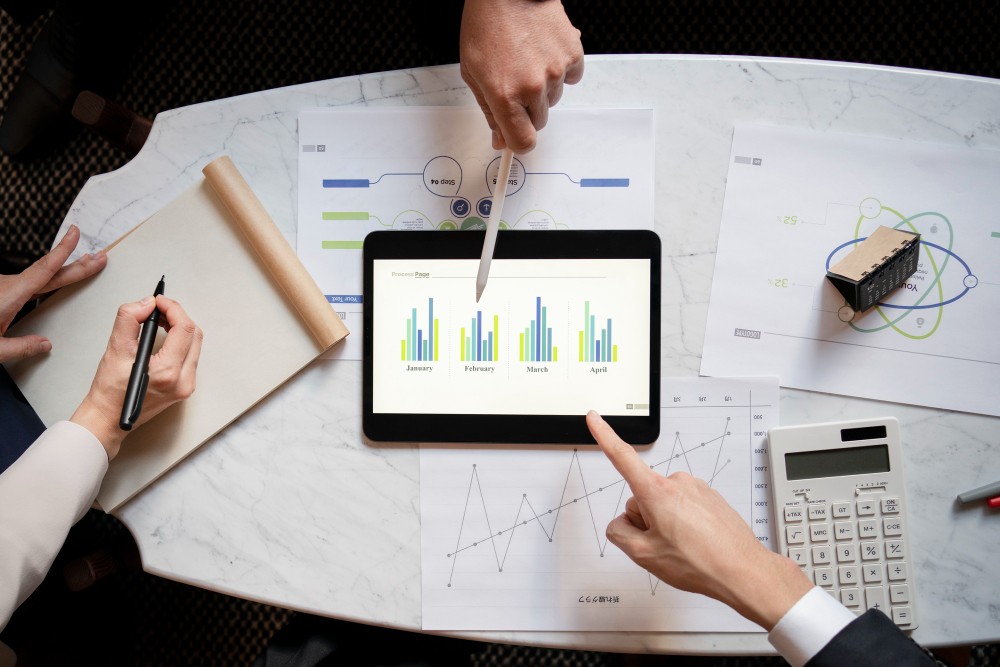Table of Contents
1. Introduction: The Rise of Data in Modern Business
2. What is Data Visualization?
3. Types of Data Visualization
4. Benefits of Data Visualization for Businesses
- Faster Decision-Making
- Data Exploration
- Improved Transparency
5. Importance of Data Visualization in Decision-Making
- Enhancing Communication Across Teams
- Supporting Transparency and Buy-In
- Fostering Cross-Functional Collaboration
- Accelerating Experimentation and Testing
6. Conclusion: Driving Smarter Decisions with Data Visualization
As businesses are growing exponentially, so is the amount in the growth of data. Data has become an important aspect in today’s modern business. This data can be found in various forms and sources, like structured and unstructured data across business. Data provides the right valuable information that helps businesses to make accurate decision. Thus, right quality of data is important for accurate decision making.
When a raw data is used it is difficult to make accurate decisions from it, thus to bridge the gap between raw data and decision making data visualization comes into play. Data visualization serves as a bridge, turning the tangled forest of raw data into a clear, navigable map that guides stakeholders to deeper insights and smarter decisions.
In this blog we will understand what is data visualization, its key elements and how data visualization matters in organizational decision making.
What is data visualization
Data visualization is the art and science of providing the visual representation for information drawn from the raw data. It uses tools like chart, graph, maps making it easier to understand and make right decisions. Majorly, data visualization turns the numerical numbers into visual representation making it easier to uncover patterns and trends which are difficult to identify in raw data.
Data visualization is of different types like, Types of data visualization
A data can be visualized in different ways, and the types include,
- Bar Chart
- Line Charts
- Pie Charts
- Scatter charts
Businesses depending or taking on data visualization have several benefits like,
- Faster decision making – By viewing big data numbers in visual format helps businesses to make decisions faster.
- Data exploration – Dashboards help businesses to quickly track and understand businesses everyday operational tasks at one place. This helps in providing a clear understanding of what is happening overall.
- Improves transparency – It helps in visualizing data making it easier and more transparent to understand, for everyone in an organization improving company’s growth.
Importance of Data visualization in decision making
For businesses to make right decisions, solely depending on instincts is no more going to be relevant. The ability to quickly interpret complex data and drawing meaningful insights is vital for business success.
Data visualization plays a key role in this process by transforming raw data into intuitive visuals—charts, graphs, and dashboards—this makes information easier to understand, share, and act upon. It provides a clear picture to everybody in the business. Lets, look into the importance of data visualization for businesses.
- Enhance communication across teams:
Data visulaization bridges the gap between technical and non-technical stakeholders by converting complex data patterns into more clear graphics and dashboards. This helps individuals without a technical background to grasp and understand visual elements easily from marketing to operations to finance and leadership. - Supports transparency and buy-in:
When data and information are represented visually, it increases transparency in the decision-making process by making it clear how conclusions are arrived at. When stakeholders can see the data presented behind a particular strategy, it builds trust, facilitates collaboration, encourages support, and recognizes that decisions are based on data—in other words, it allows the decision-making process to be completely informed and transparent. - Cross functional collaboration:
Companies like Google, engineering, product, marketing, and UX teams work collaboratively, and data visualization becomes the common language for the organization. The interactive visualizations create a shared perspective that helps to set the agenda for cross-functional teams. Rather than presenting raw data, the information is refined and unified for everyone and it helps engage with the visualization for utilization in cohesive strategy and rapid deployment. - Accelerates experimentation and testing:
Data visualization enables the analysis of experiments like A/B testing by presenting performance metric in the form of bar charts, graphs, funnels etc. This helps in quickly identifying variants better and make informed decision. For example, at Google, product teams rely on real-time dashboards to evaluate the impact of UI changes, allowing faster iteration and more agile product development.
Conclusion
Data visualization turns complex data into clear insights, helping businesses make faster, smarter, and more transparent decisions. It connects teams, builds trust, and drives better outcomes—making it a vital tool in today’s data-driven world. At Prescience, a Movate company, we harness the power of data visualization to help organizations uncover patterns, monitor performance, and drive strategic decisions, as seen in our real-world case studies.
Explore our case studies here.

Prescience Team



